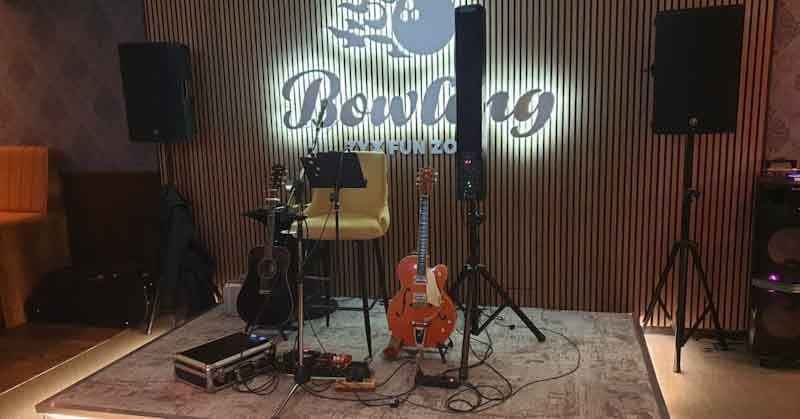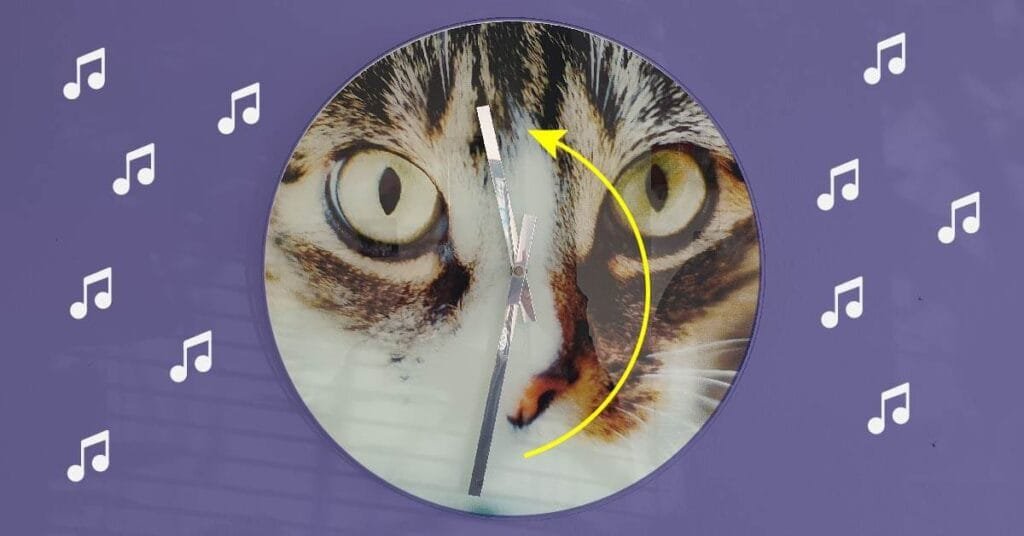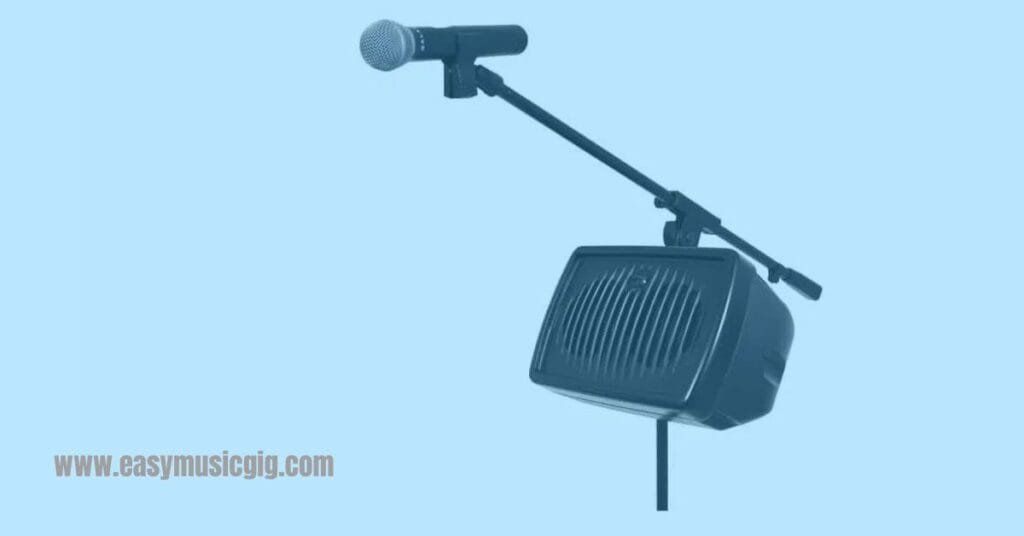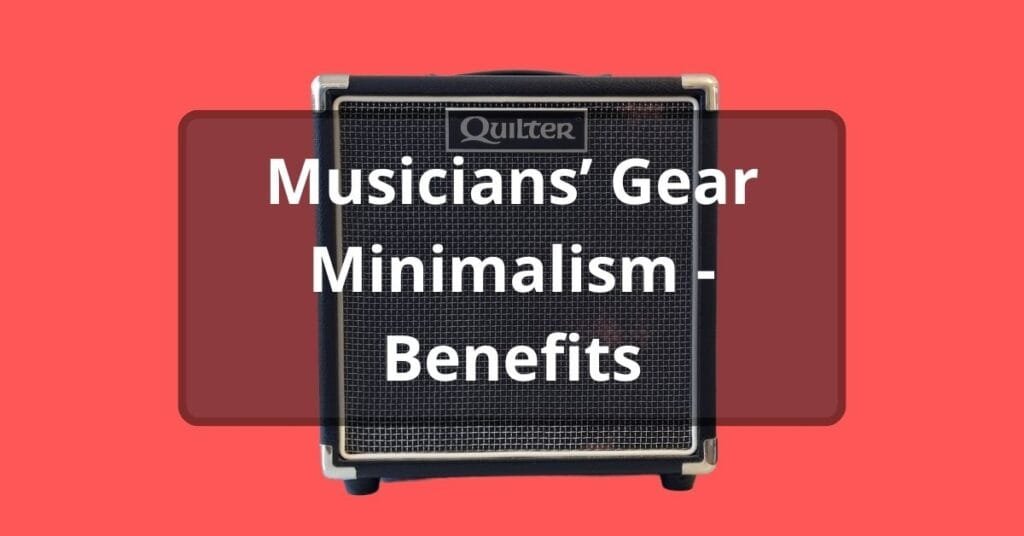My solo acoustic gear: Seamless gigging with premium sound quality
This article is about all the gear I use for my solo acoustic gigs. I will explain why I use each piece of gear and how I use it. I hope it can be useful for anyone who already plays solo acoustic gigs or is planning to.
Gear I use for solo acoustic concerts
Here is a list of all the gear I use for my solo acoustic gigs. Later, I will explain how I use each piece of gear and why it works for me.
- Acoustic guitar: Ibanez VT300TK vintage electro-acoustic guitar with Fishman Matrix Infinity VT under-saddle pickup
- Electric guitar: Gretsch G6120 SSLVO
- Effects for guitar: Line6 HX Stomp
- Effects for vocals: TC Helicon Mic Mechanic V1, TC Helicon E1 Echo & Tap delay
- Power supply: Cioks Sol
- Pedalboard: Harley Benton SpaceShip 50M w/Hardcase
- PA-for most gigs: Fishman SA220 soloamp
- PA-for extra small cafes: IMG Stageline Flat M200
- Microphone: Shure Beta 87A
- Cables: Cordial
- Tablet: iPad Air 2nd Gen
- Bluetooth Foot controller: Airturn BT500S-4
- Bluetooth MIDI adapter: CME WIDI Master
- Guitar stool: Millenium ST-95
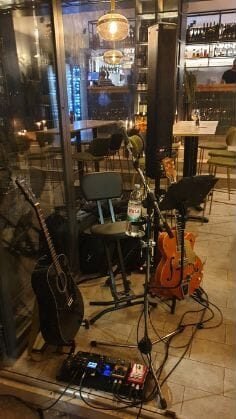
Why does my acoustic gear work for me
One thing is for sure: it takes hundreds of gigs to figure out what works for you. At least for me. I am a perfectionist and a minimalist at the same time. So, where did that get me, you ask? Starting this blog was a natural thing for me to do. Here, at Easymusicgig, I would like to share my experience and thoughts about gigging and everything related to it. I also suffer from back problems from time to time, so downsizing my gear was inevitable.
The gear I use for solo acoustic gigs is what we will be focusing on in this post. What works for me doesn’t have to work for everyone. Every musician is different in every way. What’s important for me isn’t important for everyone. Experimenting with new gear is an ongoing process. No matter how good you feel with your gear, there will always be something new around the corner that is different, smaller, and more versatile than what you use at the moment. There is nothing wrong with this. I believe it makes us better at what we do.
What do I want from my rig?
1. Sound quality
I have heard musicians say, “Why bring expensive gear to places that pay cheap?”. I believe that every guest deserves the same performance quality from a solo acoustic performer. It doesn’t matter where you are playing, but who is playing.
I try to get the best sound possible out of what I use. This is not only because of the guests, but because I feel and perform better when my gear sounds better.
2. Size and weight
Because I play alone and have back problems, it forces me to keep my gear as small and lightweight as possible. But it’s not that easy. When taking only essential stuff, you can’t have all the features and comfort you can have when using all the gear you have. It’s a balance between:
EASY+LESS vs
HARDER WORK+TOP PERFORMANCE
3. Features
Besides sounding good, I want to be able to:
- Wirelessly change songs on my iPad
- Wirelessly change presets on my HX Stomp
- Create simple loops
- Play backing tracks
- Play acoustic and electric guitar
- Sit down while playing
I love wireless! It’s so much easier. Changing songs by swiping is OK for short songs, but when you need to scroll to the next section, it’s a nightmare when playing the guitar. I use the Airturn BT500S-4 for this. It is a 4-button Bluetooth foot controller that can be customized. I use it for:
- Page down
- Page up
- Start backing track
- Stop backing track
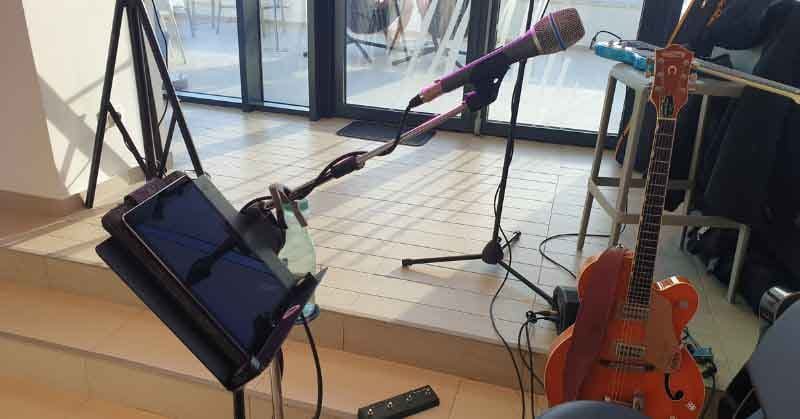
For changing presets on my HX Stomp, I use OnSong’s MIDI feature. Each song sends a MIDI message wirelessly to my CME WIDI Master Bluetooth adapter that is plugged into the HX Stomp. One cable less.
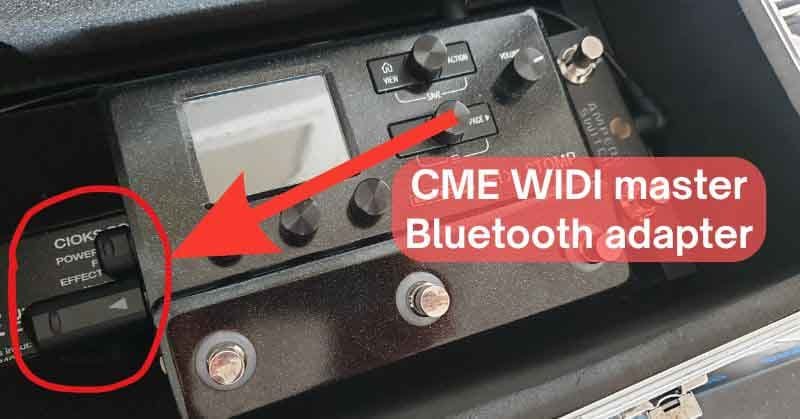
The HX Stomp has a simple looper block that can be customized by using more than one footswitch, which makes it easier to use. I don’t use looping that often, so it works for me.
I use backing tracks only for a couple of songs in each set for instrumentals. They are stored on my iPad. The Onsong app has a simple feature where you can assign an audio track (MP3) to any lyrics. I start backing tracks with the Airturn BT500S-4, simple as that.
I usually bring my electric guitar for my solo acoustic gigs as well. It’s better for the instrumentals and the oldies I play from my band’s repertoire. Overall, playing two different types of guitar adds a nice touch to the performance.
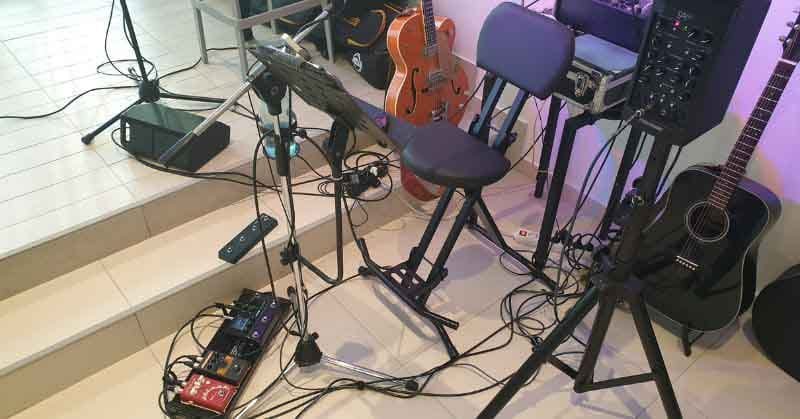
I bought a nice foldable guitar stool from Thomann a couple of months ago, and it saves my back for this type of gigging. When playing with my band, I still stand. I could always ask for a stool at the venue, but it will always be a different one, and I will have to adapt to it every time. This way, I’m sure everything is placed around me the same way.
HX Stomp for electric and acoustic guitar
There are many multi-effects pedals for acoustic guitar, but I did some research and found out that a lot of acoustic guitar players use the HX Stomp for acoustic. I find the Stomp to be an excellent multi effects pedal for acoustic guitar. This way, I have an extra small pedalboard for all my gigs.
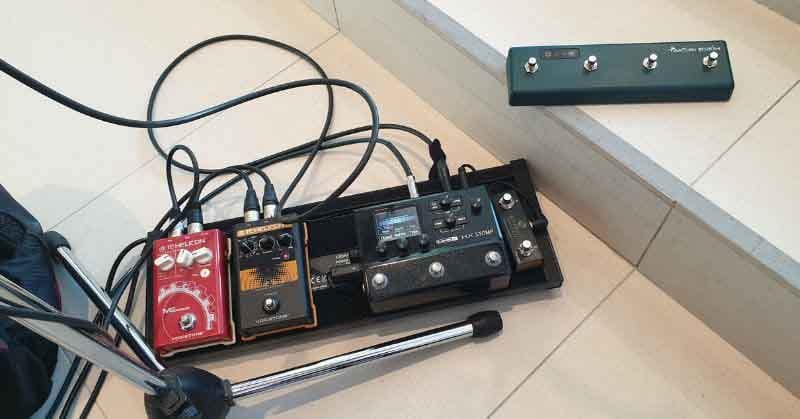
Vocal pedals
The TC Helicon Mic Mechanic is my main pedal for vocal effects. It’s a small all-in-one preamp pedal for vocal processing. It features automated EQ, de-essing, gating, and compression. It also has adjustable auto-tune, delay, and reverb, which can be switched on and off with the main footswitch. I use this pedal’s reverb for all the non-vintage songs I sing.
For the oldies, I use the TC Helicon E1 Echo pedal, which is a great vocal pedal for those vintage vocal sounds like slapback.
PA
For most gigs, I use my Fishman SA220 Soloamp, which is a column-type acoustic amp with two channels. It has a 145-degree horizontal coverage and has an anti-feedback feature, so I don’t need a monitor. I just sit sideways and perfectly hear everything.
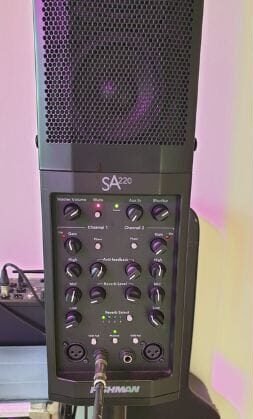
Sometimes, I play in places where space is limited and the room is very small. For those gigs, I like to use my IMG Stageline M200 active monitor with my Behringer XR18R mixer. The Flat M200 is more than capable of handling a space with 50 people.
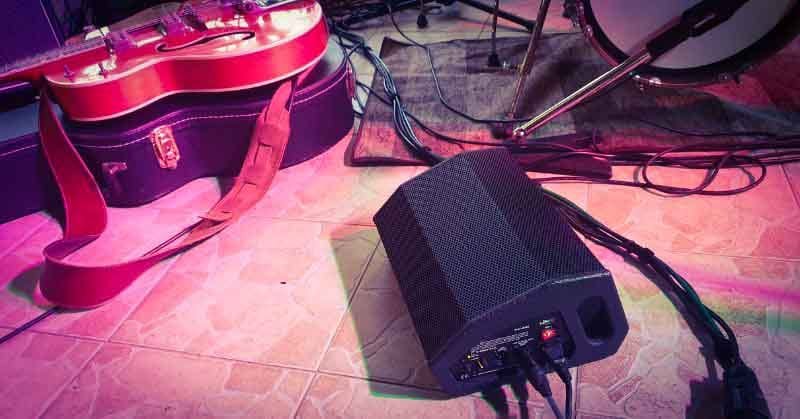
My backup solo acoustic rig
I have two guitars with me, so I’m covered there. I always have my Zoom MS70-CDR in my backpack for effects if needed. If my Fishman PA stopped working, I would use my monitor and Behringer XR18, which I always have in my car. It would work, I’ve tried it.
I also have this with me:
- Microphone
- Microphone and instrument cables
- 2 iPads with OnSong
- Mooer MicroDI box with cab sim for electric guitar, if needed
- The usual: Picks, strings,…
Starting from scratch: What acoustic gear would I buy now?
This is not my version of a budget solo acoustic gig, but rather a list of average-priced gear you need for starting to play solo gigs. It doesn’t have all the features I use, but it is enough for a good start.
1. Acoustic guitar
First, I would get a decent acoustic guitar with electronics from a known name such as Fishman, LR Baggs, K & K, or Seymour Duncan. The guitar isn’t the piece of gear I would try to save some money on. It should sound decent, but most importantly, it should also be playable to you. You are going to play for two to three hours, so it makes sense to invest in a good guitar.
Luckily, it doesn’t have to break the bank. 200$-400$ can bring you a good electro-acoustic guitar from Fender, Yamaha, Epiphone, or Ibanez. If that is too much for you now, look at the used market; it’s full of affordable acoustic guitars.
2. Public Address System (PA)
If I were starting from scratch, I would get an acoustic amp (minimum 50 watts) with 2 channels for guitar and voice with effects, or a column PA with the same features. An acoustic amp would work for most small coffee shop gigs, but for slightly larger venues, a column PA would be a better choice because they are more powerful and can cover wider areas and longer distances.
3. Other necessary gear
- Microphone with stand and cable + spare cable
- Instrument cable for guitar + spare cable
- Guitar stand. Don’t leave your guitar on the floor or leaning on a wall.
- Capo
- Tuner (Acoustic amps usually have them built in)
- Picks
- Spare set of strings
4. Optional beginner’s stuff
- Tablet for lyrics and setlists: I couldn’t live without it, some can
- Basic acoustic guitar preamp with acoustic effects. You could need this with a column type PA if they lack effects.
Final thoughts
There you go! Now you know what I use for my solo acoustic gigs. There could be less or more gear. It’s all there for some reason. Effects make my guitar and voice sound better. The wireless features are for scrolling lyrics and changing presets on my HX Stomp. I take an electric guitar to spice up things when I play those oldies from the ’50s & ’60s.
It takes me 2 or three trips to the car to bring all the gear. The Fishman PA has its own soft case with wheels, which helps with transport. My setup time is relatively fast. It takes me 15-20 minutes to slowly set up everything. The pedalboard for guitar and vocals and PA are faster to setup, but I still need to connect the wireless stuff through apps which takes some extra time.
I hope this article helps you with new ideas on what to use for your solo acoustic gigs. Every musician is unique. Some of you will get along with less gear, some will want more. What about adding a 3-channel looper and a sampling pad for percussion? Let me think about it…
